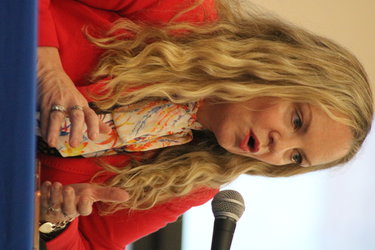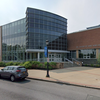Commissioner: Fall virus surge is becoming a reality
ALBANY COUNTY — County officials are watching the COVID-19 clusters downstate and warning residents that new cases in Albany County have been in the twenties every day lately.
“We all need to realize our individual behavior will play into what happens in the coming days and weeks,” said Albany County Health Commissioner Elizabeth Whalen at Friday morning’s press briefing.
She went on, “We were concerned about a second surge in the fall from day one, and the indicators are starting to show us that is becoming a reality.”
Albany County Executive Daniel McCoy noted that, since his last briefing a week ago, on Oct. 2, the number of county residents hospitalized with COVID-19 had doubled — from four patients with one of them in intensive care, to eight patients with two of them in intensive care.
“That’s the number we look at,” he said of control-room conversations where state and local leaders discuss progress in and problems with containing the disease.
“If the hospitalization continues to go up, they’re going to start shutting things down again,” said McCoy. “We need to keep things open.”
Since Oct. 2, the county has had 144 new cases, McCoy said.
While he believes students at the University of Albany have been educated about the need to wear masks and avoid gathering — “They’re starting to do the right thing,” he said — so far there have been 197 cases of COVID-19 associated with UAlbany.
McCoy said the economy needs to get up and running and that he’s “really worried” about the economy in 2022. He noted that, when residents run out of unemployment benefits, they turn to food stamps and other county programs, which have doubled or tripled since last year, McCoy said.
Whalen noted how Governor Andrew Cuomo has been focusing on hotspots for the disease. The state has set up a three-ring system to try to control outbreaks of COVID-19, largely in Orange and Rockland counties and in Brooklyn and Queens in New York City.
The center red zone is the most restrictive, with schools and businesses closed. Lesser restrictions are also put in place for the surrounding orange zone, and finally for the neighboring yellow zone.
Whalen said of Albany County, “If the numbers do go up, we are facing more shutdowns.”
She urged businesses and schools not just to have policies in place — for example for mask-wearing or temperature-taking before entry — but to enforce those policies.
Whalen termed it a “culture change.”
“Finally,” Whalen said, “The governor has been stressing enforcement … We need to double down when we hear about large gatherings or we hear about risks going on in the community.”
She urged, “Please take this very seriously.”
Cuomo noted in a conference call with the press on Friday that the “red zone” areas in four counties had a positivity rate over the past three weeks of 6.4 percent. He compared that with the rate in the rest of the state of 0.91 percent.
Cuomo said he had been shocked to realize that the “red zone” areas represent just 2.8 percent of the state’s population yet account for 19.7 percent of positive test results statewide.
“Now, this actually shows how advanced our testing system is …,” Cuomo said on the conference call. “When you do 140,000 tests you get data that is so granular that you can track it to the block.”
Cuomo also announced on Friday that COVID-19 rapid-result testing will be made available to every county in the state. The state’s health department will deploy an initial 400,000 rapid-result test kits free of charge to local health departments, hospitals, pharmacies, and other health-care providers. Results are available within 15 minutes and without having to send a specimen to a lab.
The health department will prioritize the distribution of testing kits to counties and local health-care providers in areas seeing recent upticks in cases. The rapid tests can be used to control new outbreaks, conduct surveillance testing, and will also be made available on an as-needed basis to help schools in “yellow zones” test students and staff as part of new requirements in the Cluster Action Initiative.
Twenty percent of students, teachers, and staff who are in-person in schools located within “yellow zones” are to be tested once a week starting on Friday, Oct. 16. All results must be reported promptly to the state’s health department and will be made available on the COVID Report Card dashboard.
Also on Friday, the state’s departments of health and agriculture issued a release reminding agritourism businesses that they must adhere to the COVID-19 New York Forward guidance. This includes pick-your-own fruit and vegetable operations and other on-farm activities, such as corn mazes, and hayrides, that are open to the public.
These businesses are permitted to be open as long as they set capacity limits, alert customers to and enforce social-distancing and face-mask requirements.
Newest numbers
As of Friday morning, Albany County has 3,151confirmed cases of COVID-19, an increase of 26 cases since Thursday.
Of the new cases, 13 had close contact with someone infected with the disease, three reported traveling out of state, two are healthcare workers or residents of a congregate setting, and eight did not have a clear source of transmission detected at this time. Separately, eight of the new cases are associated with UAlbany.
Currently, 997 county residents are under quarantine, up from 992. The five-day average for new daily positives increased to 20.2 from 18.4. There are now 128 active cases in the county, up slightly from 125 yesterday.
So far, 13,419 county residents have completed quarantine. Of those, 3,023 had tested positive and recovered.
Albany County’s COVID-19 death toll remains at 135.



